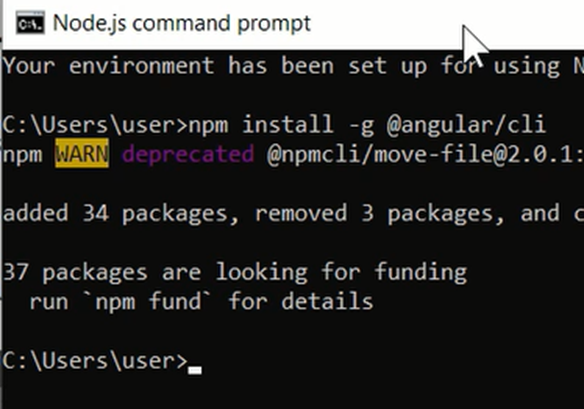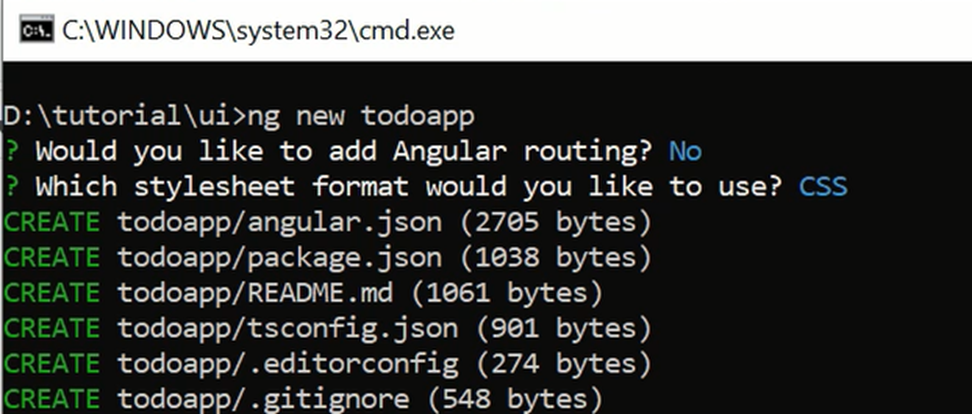Please check out the below video to understand the tutorial much better.
In this tutorial, we will learn how to build a simple “To Do” application from scratch using
Angular 16 as the front end, .NET Core Web API as the backend,
and Microsoft SQL server as the database.
Ø Install Node JS:
https://nodejs.org/en/download
Ø Install Angular CLI:
Use the below command to install angular
CLI.
npm install -g @angular/cli
Ø
Install SQL Server Management Studio (SSMS) to interact with SQL Server.
Ø Install Visual Studio Community (Free
for learning purpose only).
https://visualstudio.microsoft.com/vs/community/
Ø Create the database table and insert
couple of records:
Ø Open Visual Studio and create the
.NET Core Web API Project.
Ø Install Newtonsoft.Json Nuget package.
Ø Program.cs :
using Newtonsoft.Json.Serialization;
var builder =
WebApplication.CreateBuilder(args);
// Add
services to the container.
builder.Services.AddControllers();
// Learn
more about configuring Swagger/OpenAPI at https://aka.ms/aspnetcore/swashbuckle
builder.Services.AddEndpointsApiExplorer();
builder.Services.AddSwaggerGen();
//JSON
Serializer
builder.Services.AddControllers().AddNewtonsoftJson(options=>
options.SerializerSettings.ReferenceLoopHandling=Newtonsoft.Json.ReferenceLoopHandling.Ignore).AddNewtonsoftJson(
options=>options.SerializerSettings.ContractResolver=new DefaultContractResolver());
var app = builder.Build();
//Enable
CORS
app.UseCors(c
=> c.AllowAnyHeader().AllowAnyOrigin().AllowAnyMethod());
//
Configure the HTTP request pipeline.
if (app.Environment.IsDevelopment())
{
app.UseSwagger();
app.UseSwaggerUI();
}
app.UseAuthorization();
app.MapControllers();
app.Run();
Ø Add connection strings in
appsetting.json:
{
"ConnectionStrings": {
"todoAppDBCon": "<<Your SQL Server Connection String here>>"
},
"Logging": {
"LogLevel": {
"Default": "Information",
"Microsoft.AspNetCore": "Warning"
}
},
"AllowedHosts": "*"
}
Ø Create a new Controller
TodoAppController.cs:
using Microsoft.AspNetCore.Http;
using Microsoft.AspNetCore.Mvc;
using System.Data;
using System.Data.SqlClient;
using System.Security.AccessControl;
namespace WebApplication1.Controllers
{
[Route("api/[controller]")]
[ApiController]
public class TodoAppController : ControllerBase
{
private IConfiguration _configuration ;
public TodoAppController(IConfiguration configuration)
{
_configuration = configuration;
}
[HttpGet]
[Route("GetNotes")]
public JsonResult GetNotes()
{
string query = "select
* from dbo.Notes";
DataTable table = new DataTable();
string sqlDatasource = _configuration.GetConnectionString("todoAppDBCon");
SqlDataReader myReader;
using(SqlConnection myCon=new SqlConnection(sqlDatasource))
{
myCon.Open();
using(SqlCommand myCommand = new SqlCommand(query,myCon))
{
myReader=myCommand.ExecuteReader();
table.Load(myReader);
myReader.Close();
myCon.Close();
}
}
return new JsonResult(table);
}
[HttpPost]
[Route("AddNotes")]
public JsonResult AddNotes([FromForm] string newNotes)
{
string query = "insert
into dbo.Notes values(@newNotes)";
DataTable table = new DataTable();
string sqlDatasource = _configuration.GetConnectionString("todoAppDBCon");
SqlDataReader myReader;
using (SqlConnection myCon = new
SqlConnection(sqlDatasource))
{
myCon.Open();
using (SqlCommand myCommand = new SqlCommand(query, myCon))
{
myCommand.Parameters.AddWithValue("@newNotes", newNotes);
myReader =
myCommand.ExecuteReader();
table.Load(myReader);
myReader.Close();
myCon.Close();
}
}
return new JsonResult("Added Successfully");
}
[HttpDelete]
[Route("DeleteNotes")]
public JsonResult DeleteNotes(int id)
{
string query = "delete
from dbo.Notes where id=@id";
DataTable table = new DataTable();
string sqlDatasource = _configuration.GetConnectionString("todoAppDBCon");
SqlDataReader myReader;
using (SqlConnection myCon = new
SqlConnection(sqlDatasource))
{
myCon.Open();
using (SqlCommand myCommand = new SqlCommand(query, myCon))
{
myCommand.Parameters.AddWithValue("@id", id);
myReader =
myCommand.ExecuteReader();
table.Load(myReader);
myReader.Close();
myCon.Close();
}
}
return new JsonResult("Deleted Successfully");
}
}
}
Ø Create Angular Project:
Ø Changes in app.module.ts:
Ø Changes in app.component.ts:
Ø Changes in app.component.html:







No comments:
Post a Comment